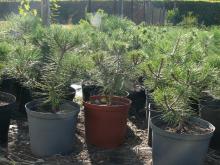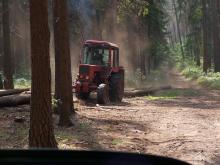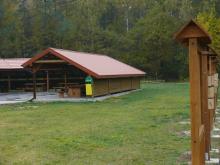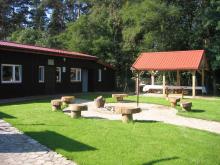 Asset Publisher
Asset Publisher
Polish forests
Poland is in the European lead, while concerning the area of all forests. They cover about 29,2 % of the country territory, and grow within the area of 9,1 million hectares. The overwhelming majority of the forests is state owned, of which almost 7,6 million hectares are managed by the State Forests National Forest Holding..
The number of Polish forest is still growing. The forestation rate of the country has increased from 21 % in 1945 to 29,2 % at the moment. Between 1995 and 2008, the forest area increased by 310 thousand ha. The basis for afforestation works is the "National Programme for Increasing the Forest Cover" (KPZL), assuming an increase of the forestation rate up to 30 % by 2020 and up to 33 % by 2050. Polish forests abound in flora, fauna and fungi. 65 % of the total number of animal species live there.
The forests grow in our country on poor soils, mainly because of the development of the agriculture in previous years. It influences the distribution of the types of the forest sites in Poland. Over 55 % of the forest areas is covered with coniferous forests. In other areas, there are forest sites, mainly the mixed ones. Their small part constitute alder and riparian forests – not more than 3 %.
In the years 1945 – 2011 the area of natural deciduous tree stands within the area of the State Forests National Forest Holding increased from 13 to 28,2 %.
Within the lowlands and uplands the most often occurring tee species is pine. It covers 64,3 % of the forest area of the State Forests National Forest Holding and 57,7 % of private and commune forests. In the mountains the predominant species is European spruce ( in the west) and European spruce with beech (in the east). Domination of pine is the result of carrying on sustainable forest management in the past. Once, the monocultures (crops or cultivations of one species) were the answer to the great demand of industry for wood. Such forests appeared to be quite fragile to climatic factors. They also were often the prey of pests' expansion.
In Polish forests, the share of other tree species, especially deciduous trees have been systematically increasing. The foresters have stepped aside from monocultures – that is why, they try to fit specific species of the forest stand to the natural stand, that would be proper for the given area. Thanks to that, in the years 1945 – 2011, the area of the deciduous tree stands within the lands of the State Forests National Forest Holding increased from 13 to 28,2 %. There occur more and more frequently the following tree species: oaks, ashes, maples, sycamore maples, elms, but also birches, beeches, alders, poplars, hornbeams, aspens, tilias and willows.
Our forests are the most often represented by the forest stands aged 40 to 80 years. The average age of the forest equals 60 years. More and more trees are of big size at the age over 80 years. Since the end of the Second World War, the forests' area has increased up to almost 1,85 million hectares.
Raport o stanie lasów w Polsce 2012
 Asset Publisher
Asset Publisher
Nowa wersja serwisu czaswlas.pl
Nowa wersja serwisu czaswlas.pl
 Turyści na szlaku Fot. Filip Kaczanowski. Lasy Państwowe
Turyści na szlaku Fot. Filip Kaczanowski. Lasy Państwowe
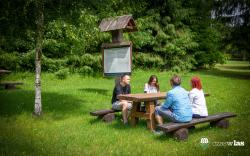 Przykładowe miejsce wypoczynku w lesie Fot. Filip Kaczanowski. Lasy Państwowe
Przykładowe miejsce wypoczynku w lesie Fot. Filip Kaczanowski. Lasy Państwowe
 plakat informujący o portalu czaswlas.pl / Lasy Państwowe
plakat informujący o portalu czaswlas.pl / Lasy Państwowe
 plakat informujący o portalu czaswlas.pl / Lasy Państwowe
plakat informujący o portalu czaswlas.pl / Lasy Państwowe
Ponad 17 tys. obiektów turystycznych Lasów Państwowych: miejsc biwakowania i kempingów, ośrodków wypoczynkowych i kwater, szlaków pieszych, rowerowych i konnych, a także parkingów, punktów widokowych i innych atrakcji we wszystkich zielonych zakątkach kraju można znaleźć w nowej odsłonie serwisu czaswlas.pl, leśnego przewodnika turystycznego.
Dzięki stworzonemu przez Lasy Państwowe serwisowi czaswlas.pl każdy może w prosty sposób zaplanować wypoczynek z przyjaciółmi lub rodziną na łonie natury w ulubionym zakątku Polski. – Jedną z trzech funkcji lasów jest udostępnianie ich społeczeństwu. Nowa odsłona naszego serwisu turystycznego jest realizacją tej funkcji. Chcemy ułatwić Polakom - zamkniętym z powodu pandemii przez wiele miesięcy w domach - wyrwanie się z pełnych betonu, hałasu i smogu miast, by mogli odpocząć w bliskości przyrody korzystając z infrastruktury turystycznej, którą dla nich tworzymy – mówi Józef Kubica, p.o. dyrektora generalnego Lasów Państwowych. – Liczymy też, że więcej osób doceni urodę polskich lasów i pracę dbających o nie leśników – dodaje.
W serwisie czaswlas.pl za pomocą prostej wyszukiwarki, zintegrowanej ze szczegółową mapą, można szybko i łatwo znaleźć, np.:
• parkingi lub miejsca postoju;
• szlaki turystyczne: piesze, rowerowe lub konne;
• ścieżki edukacyjne lub historyczne;
• punkty widokowe, które mogą być celem wyprawy;
• miejsca biwakowania lub wiaty turystyczne, które pozwolą po drodze odpocząć czy skorzystać z toalety.
Osoby planujące dłuższy pobyt w lesie mogą dzięki czaswlas.pl zapoznać się także z bazą noclegową Lasów Państwowych. Oferujemy setki miejsc w ośrodkach wypoczynkowych, szkoleniowo-wypoczynkowych i kwaterach myśliwskich, a także pokoje gościnne. Miłośnicy nocowania pod gołym niebem mogą rozbić namiot na jednym z kilkunastu pół biwakowych, kempingów lub w wyznaczonych miejscach biwakowania.
Na stronach leśnego przewodnika turystycznego można dowiedzieć się o usytuowaniu obiektów, możliwościach dojazdu, rodzaju i standardzie usług, wyposażeniu oraz okolicznych atrakcjach turystycznych. Użytkownik może ocenić obiekt i podzielić się opinią z innymi użytkownikami serwisu.
Opisy ponad 17 tys. obiektów oraz ich zdjęcia są na bieżąco aktualizowane.
Dla osób, które lubią gotowe propozycje spędzenia czasu zostały przygotowane „Pomysły na wyprawy”. Są to plany weekendowych wypraw z wykorzystaniem obiektów dostępnych w portalu czaswlas.pl. Każda z wypraw została przygotowana z myślą o konkretnej grupie użytkowników, np. chcących spędzić czas aktywnie, interesujących się historią czy tych, którzy wolą skupić się na obserwacji przyrody.
W serwisie czaswlas.pl można znaleźć także porady, których przestrzeganie sprawi, że czas spędzony w lesie będzie bezpieczny zarówno dla nas, jak i dla otaczającej nas przyrody.
A ci, którzy z jakiegoś powodu nie mogą wybrać się do lasu, mogą posłuchać na czaswlas.pl jego odgłosów dzięki Leśnej strefie relaksu.
ŻYCZYMY UDANYCH WYPRAW!


 fot. Paweł Fabijański
fot. Paweł Fabijański
 fot. Paweł Fabijański
fot. Paweł Fabijański
 fot. Paweł Fabijański
fot. Paweł Fabijański

